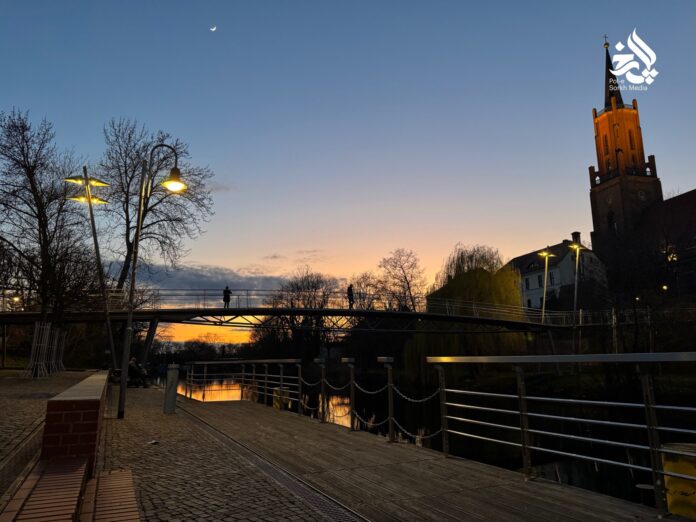Perhaps one of the most marginal yet controversial groups in Germany is the “Afghan diaspora” in this country. With a general overview, we can say that we are now witnessing the presence of the third generation of Afghan migration after 2014 in this country, and at least half a century has passed since the strong presence of this group in various states and cities of this nation. Let’s not deal with the decades before, but the migrants who poured into this country through various legal and illegal means after 2014 are considered among the most controversial migration currents in Europe, particularly in Germany. Although their level of influence and socio-cultural activities in the host country is relatively negligible and low, their presence as media subjects is high and noteworthy. At least during the one and a half years I have lived in this country, I have witnessed the publication of negative news about humanitarian events and familial and social conflicts of this group in various German-language media. Meanwhile, the level of cultural and communicative activities of our diaspora in this country reaches a minimum, and no meaningful or long-term discourse in this regard is visibly taking shape.
Perhaps the reader of this article may ask on what grounds, scientific basis, or field observations the author makes such a claim. In response, it should be said that for a while now, I have been working on a research project focused on “intercultural communications of the Afghan diaspora in Germany,” and my research method requires identifying the specific contexts and manifestations that shape and strengthen intercultural communications among Afghan migrants in this country. Through analyzing the content of their publications, brochures, and advertisements, I aim to study, identify, and categorize the dominant discourse surrounding the Afghan diaspora in this country.
After studying, searching, and speaking with intellectuals and cultural figures residing in Berlin, Hamburg, and Bavaria, I obtained specific components and am currently analyzing the content of their messages and advertisements, the results of which will be published as part of the research. However, among several important and influential factors that I recognized as serious challenges obstructing intercultural communications for Afghans in the host society, the absence of a “library” or, so to speak, a “reading room, book exchange, or dialogue center” initiated by Afghan migrants in Germany was striking. To ensure whether the Afghan diaspora in Germany has ever established a library or book center over the years, I contacted some cultural activists and heads of cultural associations in this country and raised the issue on social media as a cultural gap. The responses I received in my conversations and social media posts were negative, and I became certain that the lack of a book center or library by Afghan migrants in Germany is a deeply felt cultural absence.
An Inactive Diaspora
The results of my searches clearly showed that the Afghan diaspora in Germany is inactive, and a significant number are caught up in daily routines, minor personal events, and virtual spaces. Of course, it should not be overlooked that migration and exile indirectly exert such negative effects on the moods, behaviors, and attitudes of individuals that it strips them of the opportunity to think deeply about their fate, future, and structured cultural or social activities. The migrant individual becomes afflicted with inertia, anxiety, and carelessness. Although this subject requires research and reference to existing studies, at the very least, my observations, experiences, and conversations with third-generation migrants suggest that one of the major factors behind this inertia is the psychological impact of estrangement, alienation, and challenges in social integration.
What Is the Outlook?
The outlook of the Afghan diaspora in Germany depends on three key factors: migrants who took refuge in Germany after 2021, the use of rich cultural heritage as a connecting point between migrants and the host society, and finally, drawing upon the experiences of active diasporas from other countries in Germany.
To elaborate on these three factors, one can say that after the collapse of the republic and the migration of thousands of active and influential young individuals to Europe, especially Germany, a transformation has taken place within the Afghan diaspora that sets it apart from the first and second generations of migration in terms of knowledge, education, and experience. Since the majority of the earlier generations were tradesmen, laborers, and low-educated individuals, they failed to establish an effective discourse or strengthen the circle of intercultural communications in this country. However, the generation that arrived in Germany after 2021 mostly consists of young individuals with knowledge, experience, and, ultimately, motivation for work and engagement. If this group can emerge from the shell of anxiety, routine, and mental fragmentation—and eventually overcome their inertia—they can take meaningful steps toward forming a new discourse and, subsequently, strengthening intercultural communications with the host society.
Without a doubt, cultural work within the framework of the intellectual, cultural, and literary heritage of the East—particularly by introducing renowned figures such as Hafez, Rumi, Khayyam, and others as connecting factors between the “migrant society and the host society”—will be extremely effective. Of course, such programs, which are mostly long-term in nature, will have greater impact if cautious learning is done from both the failed and successful experiences of diasporas from other countries.



